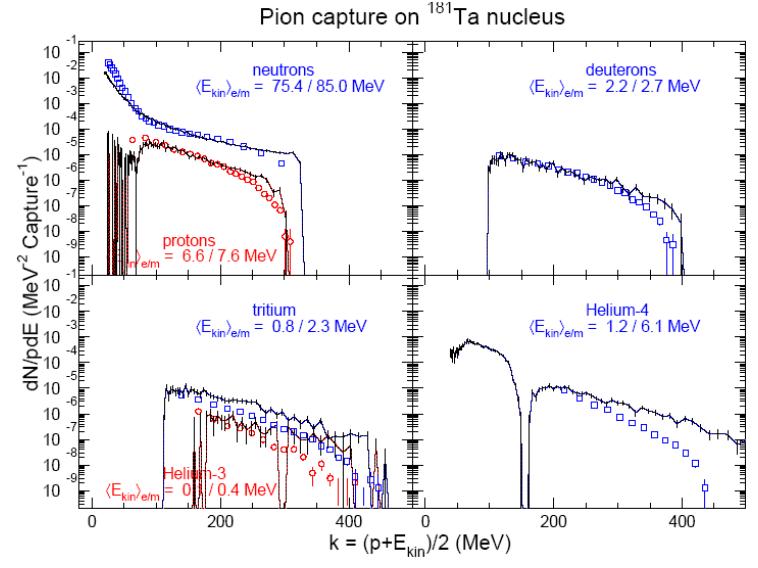Stopped pi- are captured in Ta. - Data reference: R. Madey et al., Phys. Rev. C 25, 3050 (1982).
Simulation Conditions - Geant4 version: 8.1
- Models: CHIPS
Comments - Plot details:
- Blue squares: data for neutrons, deuterons, tritons, 4He
- Red circles: data for protons, 3He
- Histograms: model predictions
- Numbers in angle brackets (Ekin) give mean kinetic energy as experimental value over model-predicted value
- The horizontal axis is in units of k, which is the average of the secondary particle's kinetic energy and momentum
- Plot features:
- Neutrons: the general shape of the data is reproduced, but the model under-estimates the data by a factor of 2 at the low energies and over-estimates by 50% at high energies.
- Protons: the model under-estimates by a factor of 3 at the lowest energy data point, and over-estimates by a factor of 3 at high energies
- Deuterons: good agreement up to 300 MeV, but the model remains much higher than the data points (by a factor of 30) at the end-point.
- Tritium, 3He and 4He: model and data differ significantly, but spectral shapes are reproduced
Summary - The CHIPS model reproduces the qualitative features of the capture-generated secondaries, but significant differences with data suggest model tuning is necessary.
Plots  | 